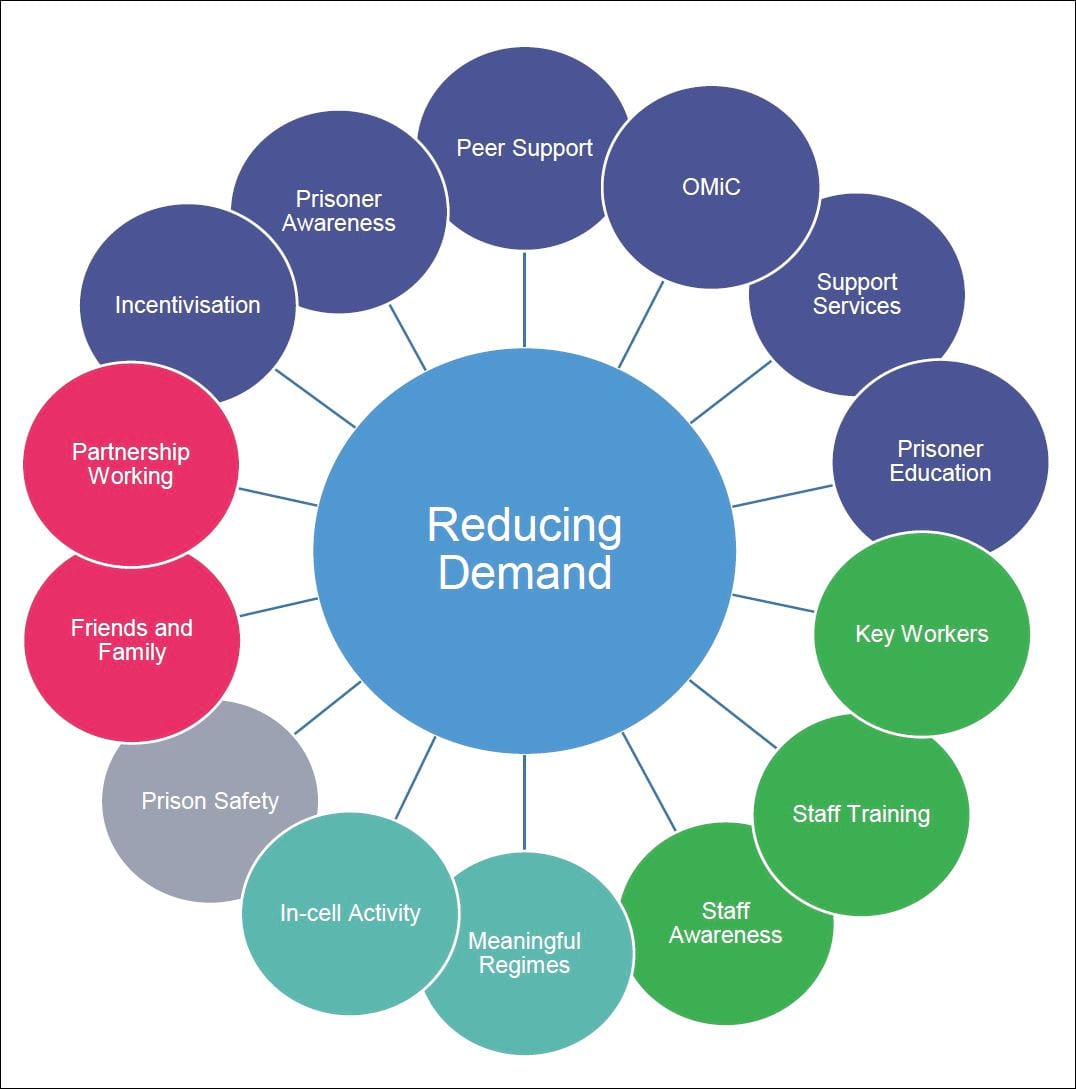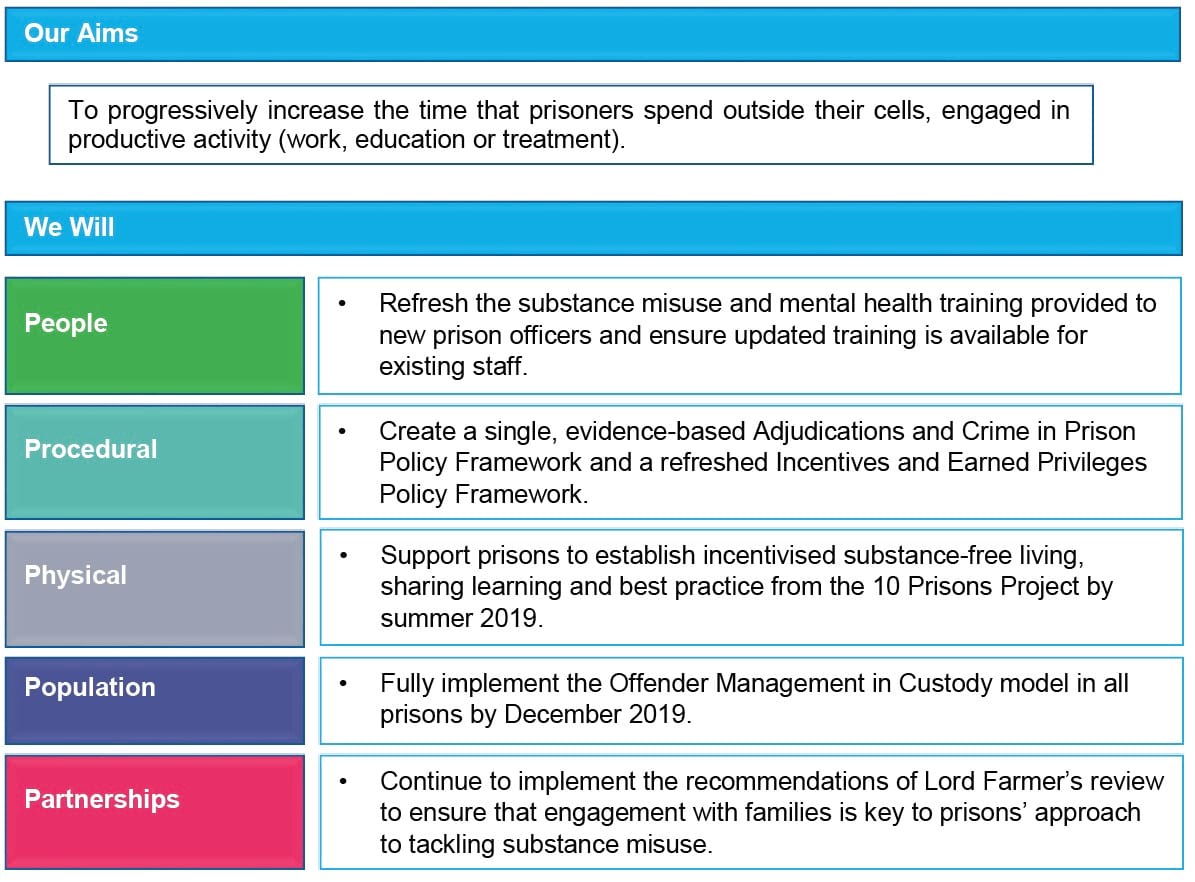Earlier this month (3 April 2019) Her Majesty’s Prison and Probation Service (HMPPS) published its new Prison Drugs Strategy which has been developed to support and complement the main government Drug Strategy published in 2017 and is centred around the same three objectives of restricting supply, reducing demand building recovery. The prison drug strategy adopts a “5P” approach with each of the three objectives focusing on five key areas:
- People – that prisons have the right staff, with appropriate skills and support
- Procedural – that prison processes are clear, fair and effective
- Physical – that prison conditions are safe, clean, decent and promote well-being and recovery
- Population – that prisoners have positive relationships and engage in constructive activities
- Partnership – that all the organisations contributing to achieving our aims work together effectively
Last week, I looked at the strategy’s first objective: restricting supply, this week’s post focused on the second, and arguably the most difficult, reducing demand for drugs in prison.
Reducing demand
It is almost three years since the ground-breaking User Voice report into the use of New Psychoactive Substances in prison, commissioned by the NHS, was published. The report spelled out graphically the serious health and security problems caused by the epidemic levels of use of the synthetic cannabinoid Spice, attributing its popularity among prisoners to its “bird killing” properties. It is reducing the demand for this drug which is key to the success of the new strategy.
The strategy sets out three primary areas of work within the objective of reducing demand:
- A new incentives system to encourage prisoners to give up the use of drugs and engage with the positive activities available inside.
- Providing opportunities for prisoners to engage in purposeful activity and engage in positive change, and
- Developing the positive influence of families and peers.
To incentivise prisoners not to use drugs, the prison service has developed the Identified Substance User (ISU) and Incentivised Substance Free Living (ISFL) concepts. The ISU approach aims to help prisons respond effectively when an individual fails a drug test by offering support and treatment to those who want to abstain and clear guidance about sanctions for repeat offenders who will not engage with support. ISFL wings will allow prisoners who demonstrate, through regular voluntary testing, that they are not misusing drugs to experience better living conditions.
The strategy makes a bold bid to describe the opportunities in prison of the new Education and Employment Strategy with great use of Release on Temporary Licence (ROTL) and more purposeful activity in general. Of course, the problem at the moment, graphically described every week in the Prison Inspectorate’s reports, is that the idea of our prisons being models of constructive and purposeful activity is mainly aspirational, with prisoners often locked up in their cells for many more hours than they should be.
The strategy also makes mention of a new (May 2018) peer support toolkit which is supporting and facilitating the development of peer support across the prison estate with the aim of increased positive self-identity, employability skills for the peer worker and a positive impact on the attitudes, engagement and behaviour of the recipients.
The main activities set out in the strategy to restrict supply are summarised in the graphic below.





